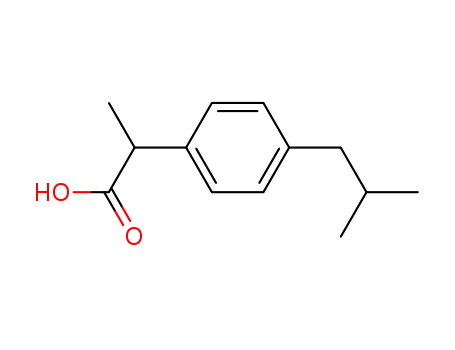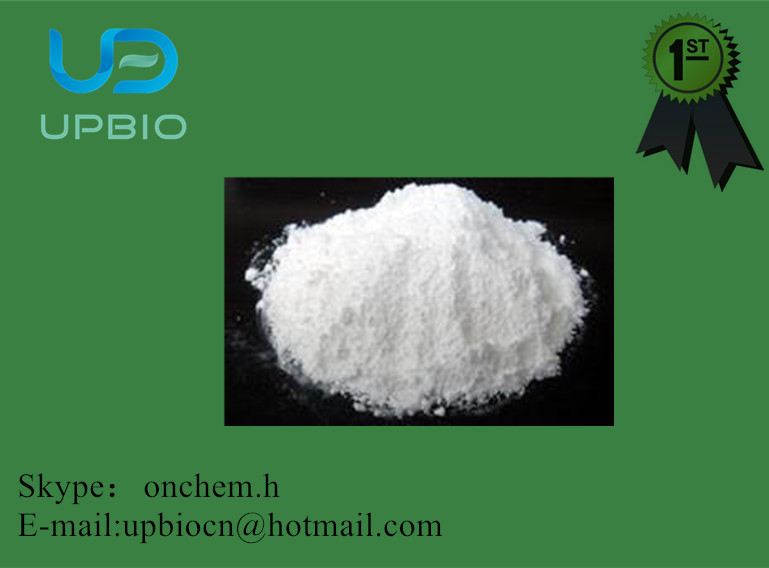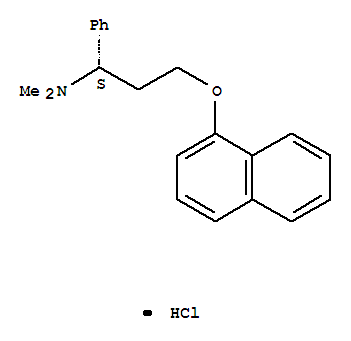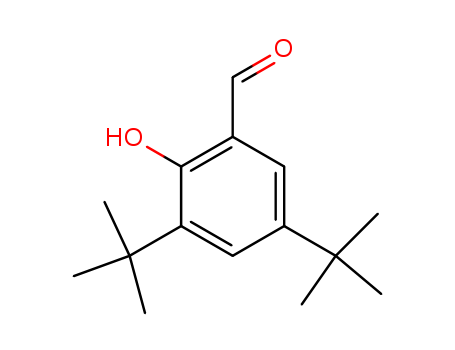
Product Details
Appearance:Colourless, crystalline solid
3C7374796C6520747970653D22746578742F637373223E2E70726F4D61696E207B70616464696E673A20313570783B666F6E743A20313570782F312E382022417269616C222C20224D6963726F736F6674205961686569222C2022E5BEAEE8BDAFE99B85E9BB91222C20224869726167696E6F2053616E73204742222C2022E586ACE99D92E9BB91E4BD93222C202248656C766574696361222C202253696D486569222C2022E9BB91E4BD93222C202253545869686569222C2022E58D8EE69687E7BB86E9BB91222C2073616E732D73657269663B7D0A2E7068797369636F6368656D6963616C207B6D617267696E2D746F703A20323070783B207D0A2E7068797369636F6368656D6963616C206832207B666F6E742D73697A653A20323070783B6D617267696E2D626F74746F6D3A20313070783B666F6E742D7765696768743A20626F6C643B7D0A2E7068797369636F6368656D6963616C20756C207B77696474683A20313030253B706F736974696F6E3A2072656C61746976653B7D0A2E7068797369636F6368656D6963616C20756C206C69207B6C696E652D6865696768743A20333070783B7D0A2E7068797369636F6368656D6963616C202E64616E67657249636F6E207B706F736974696F6E3A206162736F6C7574653B72696768743A202D32363070783B746F703A203070783B77696474683A2032343070783B7D0A2E7068797369636F6368656D6963616C202E64616E67657249636F6E20696D67207B77696474683A20333070783B6865696768743A20333070783B7D0A2E7068797369636F6368656D6963616C20756C206C692062207B77696474683A2031353070783B646973706C61793A20696E6C696E652D626C6F636B3B666F6E742D7765696768743A20626F6C643B666C6F61743A6C6566747D2E7068797369636F6368656D6963616C20756C206C6920656D207B646973706C61793A20696E6C696E652D626C6F636B3B77696474683A2063616C632831303025202D203135307078293B7D0A2E70726F5F746974206832207B666F6E742D73697A653A20313870783B666F6E742D7765696768743A20626F6C643B6D617267696E2D626F74746F6D3A20313570783B7D0A2E70726F5F746974207370616E207B646973706C61793A20696E6C696E652D626C6F636B3B77696474683A203470783B6865696768743A20313670783B6261636B67726F756E643A20233030363639393B6D617267696E2D72696768743A203570783B7D0A2E70726F436F6E207B626F726465722D626F74746F6D3A20317078202364646420646F747465643B70616464696E672D626F74746F6D3A20323070783B6D617267696E2D626F74746F6D3A20323070783B7D0A2E70726F436F6E206833207B666F6E742D73697A653A20313870783B6D617267696E3A203130707820303B7D0A2E61727469636C654D61696E207B646973706C61793A20666C65783B7D0A2E61727469636C652068322E746974206120696D67207B6D617267696E3A20302031307078203020323070783B7D0A2E61727469636C65202E616473426F78207B77696474683A2033323070783B7D0A2E61727469636C65202E61727469636C654C6973207B77696474683A2063616C632831303025202D203336307078293B6D617267696E2D72696768743A20343070783B7D0A2E61727469636C654C69207B626F726465722D626F74746F6D3A20317078202364646420736F6C69643B70616464696E673A203130707820303B706F736974696F6E3A2072656C61746976653B7D0A2E61727469636C654C693A6E74682D6C6173742D6368696C642831297B626F726465722D626F74746F6D3A206E6F6E653B7D2E61727469636C654C69202E646F776E4C6F6164207B706F736974696F6E3A206162736F6C7574653B72696768743A20303B746F703A20313070783B646973706C61793A20696E6C696E652D626C6F636B3B626F726465723A20317078202331333842444520736F6C69643B636F6C6F723A20233133384244453B70616464696E673A2031707820313070783B626F726465722D7261646975733A203370783B666F6E742D73697A653A20313470783B7D0A2E61727469636C654C69202E646F776E4C6F61643A686F766572207B636F6C6F723A20236666663B6261636B67726F756E643A20233133384244453B7D0A2E61727469636C654C69206833207B666F6E742D7765696768743A20626F6C643B636F6C6F723A20233333333B77696474683A2063616C632831303025202D203132307078293B7D0A2E61727469636C654C69206834207B636F6C6F723A20233636363B666F6E742D73697A653A20313470783B7D0A2E61727469636C654C69206835207B636F6C6F723A20233939393B666F6E742D7374796C653A206974616C69633B7D0A2E61727469636C654C692070207B636F6C6F723A20233636363B666F6E742D73697A653A20313470783B7D0A2E726F7574654974656D207B70616464696E673A20313070783B626F726465722D626F74746F6D3A20327078202366326632663220736F6C69643B7D0A2E726F7574654974656D3A6E74682D6C6173742D6368696C642831297B626F726465722D626F74746F6D3A206E6F6E653B7D2E726F7574654974656D202E6974656D436F6E207B646973706C61793A20666C65783B616C69676E2D6974656D733A2063656E7465723B6D61782D77696474683A20313030253B6F766572666C6F772D783A207363726F6C6C3B7D0A2E726F7574654974656D202E6974656D436F6E2E6368616E6765207B666C65782D777261703A20777261703B7D0A2E726F7574654974656D20646C206474202E696D67426F78207B626F726465723A20317078202364656465646520736F6C69643B7D0A2E726F7574654974656D20646C206474202E696D67426F783A686F766572207B626F726465722D636F6C6F723A20233030394543353B7D0A2E726F7574654974656D20646C206464207B6261636B67726F756E643A20236563656365633B70616464696E673A20313070783B77696474683A2031313270783B7D0A2E726F7574654974656D20646C2064642061207B646973706C61793A20696E6C696E652D626C6F636B3B77696474683A20313030253B6F766572666C6F773A2068696464656E3B77686974652D73706163653A206E6F777261703B746578742D6F766572666C6F773A20656C6C69707369733B6C696E652D6865696768743A20313270783B7D0A2E726F7574654974656D20646C20646420613A686F766572207B636F6C6F723A20233042364642433B7D0A2E726F7574654974656D20646C2064642070207B6F766572666C6F773A2068696464656E3B77686974652D73706163653A206E6F777261703B746578742D6F766572666C6F773A20656C6C69707369733B6C696E652D6865696768743A20313270783B636F6C6F723A20233939393B7D0A2E726F7574654974656D202E696D67426F78207B77696474683A2031313270783B6865696768743A2031303370783B646973706C61793A20666C65783B616C69676E2D6974656D733A2063656E7465723B6A7573746966792D636F6E74656E743A2063656E7465723B7D0A2E726F7574654974656D202E696D67426F7820696D67207B6D61782D77696474683A20313030253B6D61782D6865696768743A20313030253B7D0A2E726F7574654D6F7265207B6D617267696E2D6C6566743A20313070783B706F736974696F6E3A206162736F6C7574653B72696768743A20313070783B746F703A203530253B7D0A2E726F7574654D6F72652061207B636F6C6F723A20233042364642433B6D617267696E2D6C6566743A20313070783B7D0A2E726F7574654D6F7265206120696D67207B6D617267696E2D6C6566743A20313070783B7D0A2E726F757465426F78207B6D61782D6865696768743A2036303070783B6D617267696E2D746F703A20313070783B6D617267696E2D626F74746F6D3A20333070783B6F766572666C6F772D793A207363726F6C6C3B7D0A2E6E657750726F4E616D65202E726F757465426F78207B6F766572666C6F772D793A20696E68657269743B7D0A2E726F7574654974656D202E736F6E207B646973706C61793A20666C65783B616C69676E2D6974656D733A2063656E7465723B6D617267696E2D626F74746F6D3A20313070783B7D0A2E726F7574654974656D202E736F6E202E746974207B706F736974696F6E3A206162736F6C7574653B746F703A202D323070783B6C6566743A203530253B77696474683A20313030253B6F766572666C6F773A2068696464656E3B77686974652D73706163653A206E6F777261703B746578742D6F766572666C6F773A20656C6C69707369733B7D0A2E726F7574654974656D202E736F6E202E616464207B6D617267696E3A203020313070783B77696474683A20323070783B7D0A2E726F7574654974656D202E736F6E202E6172724C207B6D617267696E3A203020313070783B77696474683A20373070783B7D0A2E726F7574654974656D202E626C756520646C206474202E696D67426F78207B626F726465723A20317078202363366533663520736F6C69643B7D0A2E726F7574654974656D202E626C756520646C202E696D67426F783A686F766572207B626F726465722D636F6C6F723A20233030394543353B7D0A2E726F7574654974656D202E626C756520646C206464207B6261636B67726F756E643A20236439656466393B7D0A2E726F7574654974656D202E64657461696C207B70616464696E672D6C6566743A20313070783B7D0A2E726F7574654974656D202E64657461696C2061207B636F6C6F723A20233042364642433B7D0A2E726F7574654974656D202E64657461696C20696D67207B6D617267696E2D6C6566743A203570783B7D0A2E726F7574654974656D202E64657461696C207461626C65207B626F726465722D72696768743A20317078202364656465646520736F6C69643B626F726465722D626F74746F6D3A20317078202364656465646520736F6C69643B7D0A2E726F7574654974656D202E64657461696C207461626C652E6F70656E207B646973706C61793A207461626C653B7D0A2E726F7574654974656D202E64657461696C207461626C652074642C2E726F7574654974656D202E64657461696C207461626C65207468207B626F726465722D6C6566743A20317078202364656465646520736F6C69643B626F726465722D746F703A20317078202364656465646520736F6C69643B70616464696E673A203570783B7D0A2E7570446F776E20756C2C2E6F7468657250726F20756C7B2F2A20646973706C61793A20666C65783B202A2F6D617267696E2D626F74746F6D3A20323070783B7D0A2E7570446F776E20756C206C692C2E6F7468657250726F20756C206C697B746578742D616C69676E3A2063656E7465723B6865696768743A2032313070783B6F766572666C6F773A2068696464656E3B666C65783A20313B70616464696E673A203020323570783B666C6F61743A20206C6566743B77696474683A203230253B7D0A2E7570446F776E20756C206C69202E696D67426F782C2E6F7468657250726F20756C206C69202E696D67426F787B646973706C61793A20666C65783B616C69676E2D6974656D733A2063656E7465723B6A7573746966792D636F6E74656E743A2063656E7465723B6865696768743A2031333070783B77696474683A20313030253B6F766572666C6F773A2068696464656E3B6D617267696E2D626F74746F6D3A203570783B666F6E742D73697A653A20313470783B7D0A2E7570446F776E20756C206C69202E696D67426F7820696D672C2E6F7468657250726F20756C206C69202E696D67426F7820696D677B6D61782D77696474683A20313030253B6D61782D6865696768743A20313030253B7D0A2E7570446F776E20756C206C69207370616E2C2E6F7468657250726F20756C206C69207370616E7B636F6C6F723A20233030363639393B7D0A2E7570446F776E20756C206C6920702C2E6F7468657250726F20756C206C6920707B646973706C61793A202D7765626B69742D626F783B2D7765626B69742D626F782D6F7269656E743A20766572746963616C3B2D7765626B69742D6C696E652D636C616D703A20323B6F766572666C6F773A2068696464656E3B636F6C6F723A20233636363B666F6E742D73697A653A20313470783B7D0A2E636C6561726669787B2A7A6F6F6D3A313B7D0A2E636C6561726669783A61667465727B20636F6E74656E743A2027273B20646973706C61793A20626C6F636B3B636C6561723A20626F74683B7D0A3C2F7374796C653E0A3C64697620636C6173733D2270726F4D61696E223E0A3C64697620636C6173733D227068797369636F6368656D6963616C2070726F436F6E223E0A3C64697620636C6173733D2270726F5F746974223E0A3C68323E486F742053616C652C2049627570726F66656E2031353638372D32372D3120676F6F642070726F64756365723C2F68323E0A3C2F6469763E0A0A3C756C20636C6173733D22636C656172666978223E0A093C6C693E3C623E4D6F6C6563756C617220466F726D756C613A3C2F623E3C656D3E4331334831384F323C2F656D3E3C2F6C693E0A093C6C693E3C623E4D6F6C6563756C6172205765696768743A3C2F623E3C656D3E3230362E3238353C2F656D3E3C2F6C693E0A093C6C693E3C623E417070656172616E63652F436F6C6F75723A3C2F623E3C656D207469746C653D22436F6C6F75726C6573732C206372797374616C6C696E6520736F6C6964223E436F6C6F75726C6573732C206372797374616C6C696E6520736F6C6964266E6273703B3C2F656D3E3C2F6C693E0A093C6C693E3C623E5661706F722050726573737572653A3C2F623E3C656D207469746C653D22223E302E3030303133396D6D4867206174203235266465673B43266E6273703B3C2F656D3E3C2F6C693E0A093C6C693E3C623E4D656C74696E6720506F696E743A3C2F623E3C656D207469746C653D22223E37372D373820266465673B43286C69742E29266E6273703B3C2F656D3E3C2F6C693E0A093C6C693E3C623E5265667261637469766520496E6465783A3C2F623E3C656D207469746C653D22223E312E353530302028657374696D61746529266E6273703B3C2F656D3E3C2F6C693E0A093C6C693E3C623E426F696C696E6720506F696E743A3C2F623E3C656D207469746C653D22223E3331392E3620266465673B4320617420373630206D6D4867266E6273703B3C2F656D3E3C2F6C693E0A093C6C693E3C623E504B413A3C2F623E3C656D207469746C653D22223E704B6120342E343526706C75736D6E3B20302E30342848324F2C74203D20323526706C75736D6E3B302E352C493D302E3135284B436C292928417070726F78696D61746529266E6273703B3C2F656D3E3C2F6C693E0A093C6C693E3C623E466C61736820506F696E743A3C2F623E3C656D207469746C653D22223E3231362E3720266465673B43266E6273703B3C2F656D3E3C2F6C693E0A093C6C693E3C623E505341EFBC9A3C2F623E3C656D207469746C653D22223E33372E3330303030266E6273703B3C2F656D3E3C2F6C693E0A093C6C693E3C623E44656E736974793A3C2F623E3C656D207469746C653D22223E312E30323920672F636D3C7375703E333C2F7375703E266E6273703B3C2F656D3E3C2F6C693E0A093C6C693E3C623E4C6F67503A3C2F623E3C656D207469746C653D22223E332E3037333230266E6273703B3C2F656D3E3C2F6C693E0A3C2F756C3E0A3C2F6469763E0A0A3C64697620636C6173733D226D736473426F782070726F436F6E223E0A3C64697620636C6173733D2270726F5F746974223E0A3C68323E49627570726F66656E2031353638372D32372D312055736167653C2F68323E0A3C2F6469763E0A0A3C703E49627570726F66656E2062656C6F6E677320746F2061206E6F6E2D737465726F6964616C20616E74692D696E666C616D6D61746F727920616E616C67657369632E2049742068617320657863656C6C656E7420616E74692D696E666C616D6D61746F72792C20616E616C676573696320616E6420616E746970797265746963206566666563742077697468206C6573732061647665727365207265616374696F6E732E2049627570726F66656E20697320612077686974652C206372797374616C6C696E6520616E74692D696E666C20616D6D61746F72792064727567207573656420696E206E756D65726F7573206D656469636174696F6E732E204974206973207468652061637469766520696E6772656469656E74206D61726B6574656420756E64657220766172696F7573207472616465206E616D657320696E636C7564696E6720416476696C2C204D6F7472696E2C20616E64204E75726F66656E2E2049627570726F66656E2069732061206E6F6E737465726F6964616C20616E74692D696E666C20616D6D61746F7279206472756720284E534149442920757365642061732061207061696E2072656C69657665722028616E616C6765736963292C20666576657220726564756365722028616E746970797265746963292C20616E6420696E666C616D6D6174696F6E20726564756365722E20496E666C20616D6D6174696F6E20697320612067656E6572616C2070687973696F6C6F676963616C20726573706F6E736520746F207469737375652064616D61676520636861726163746572697A6564206279207377656C6C696E672C207061696E2C20616E6420686561742E49627570726F66656E20776F726B7320627920696E6869626974696E672074686520656E7A796D65206379636C6F6F787967656E6173652028434F58292C20776869636820696E207475726E20696E74657266657265732077697468207468652073796E746865736973206F662070726F737461676C616E64696E732E20434F5820657869737473206173207365766572616C20636F656E7A796D6520666F726D732074686174206172652073696D696C617220696E207374727563747572653A20434F582D312C20434F582D322C20434F582D333B2069627570726F66656E2069732061206E6F6E73656C65637469766520696E68696269746F72206F6620626F746820434F582D3120616E6420434F582D322E20434F582D3120697320636F6E74696E75616C6C792070726F647563656420696E206D616D6D616C69616E2063656C6C73207468726F7567686F75742074686520626F647920696E20726573706F6E736520746F2070687973696F6C6F676963616C207374696D756C692E204120636F6D6D6F6E20676F616C20696E2074686520646576656C6F706D656E74206F66207061696E20616E6420696E666C616D6D6174696F6E206D65646963696E657320686173206265656E20746865206372656174696F6E206F6620636F6D706F756E64732074686174206861766520746865206162696C69747920746F20747265617420696E666C616D6D6174696F6E2C2066657665722C20616E64207061696E20776974686F75742064697372757074696E67206F746865722070687973696F6C6F676963616C2066756E6374696F6E732E2047656E6572616C207061696E2072656C6965766572732C2073756368206173206173706972696E20616E642069627570726F66656E2C20696E686962697420626F746820434F582D3120616E6420434F582D322E2041206D656469636174696F6E262333393B73207370656369666963616374696F6E20746F7761726420434F582D312076657273757320434F582D322064657465726D696E65732074686520706F74656E7469616C20666F722061647665727365207369646520656666656374732E204D656469636174696F6E732077697468206772656174657220737065636966696369747920746F7761726420434F582D312077696C6C2068617665206772656174657220706F74656E7469616C20666F722070726F647563696E672061647665727365207369646520656666656374732E20427920646561637469766174696E6720434F582D312C206E6F6E73656C656374697665207061696E2072656C69657665727320696E63726561736520746865206368616E6365206F6620756E646573697261626C65207369646520656666656374732C20657370656369616C6C79206469676573746976652070726F626C656D7320737563682061732073746F6D61636820756C6365727320616E642067617374726F696E74657374696E616C20626C656564696E672E20434F582D3220696E68696269746F72732C20737563682061732056696F787820616E642043656C65627265782C2073656C6563746976656C79206465616374697661746520434F582D3220616E6420646F206E6F74206166662065637420434F582D31206174207072657363726962656420646F73616765732E20434F582D3220696E68696269746F72732061726520776964656C79207072657363726962656420666F722061727468726974697320616E64207061696E2072656C6965662E20496E20323030342C2074686520466F6F6420616E6420447275672041646D696E697374726174696F6E20284644412920616E6E6F756E636564207468617420616E20696E63726561736564207269736B206F662068656172742061747461636B20616E64207374726F6B6520776173206173736F6369617465642077697468206365727461696E20434F582D3220696E68696269746F72732E2054686973206C656420746F207761726E696E67206C6162656C7320616E6420766F6C756E746172792072656D6F76616C206F662070726F64756374732066726F6D20746865206D61726B657420627920647275672070726F6475636572733B20666F72206578616D706C652C204D6572636B20746F6F6B2056696F7878206F666620746865206D61726B657420696E20323030342E20416C74686F7567682069627570726F66656E20696E68696269747320626F746820434F582D3120616E6420434F582D322C20697420686173207365766572616C2074696D65732074686520737065636966696369747920746F7761726420434F582D3220636F6D706172656420746F206173706972696E2C2070726F647563696E672066657765722067617374726F696E74657374696E616C207369646520656666656374732E3C2F703E0A0A3C703E266E6273703B3C2F703E0A0A3C703E446566696E6974696F6E3C2F703E0A0A3C703E43684542493A2041206D6F6E6F636172626F78796C6963206163696420746861742069732070726F70696F6E6963206163696420696E207768696368206F6E65206F662074686520687964726F67656E7320617420706F736974696F6E2032206973207375627374697475746564206279206120342D28322D6D657468796C70726F70796C297068656E796C2067726F75702E3C2F703E0A0A3C703E266E6273703B3C2F703E0A0A3C703E496E6469636174696F6E733C2F703E0A0A3C703E49627570726F66656E2028416476696C2C204D6F7472696E29206973207573656420617320616E20616E616C676573696320616E6420616E7469707972657469632061732077656C6C20617320612074726561746D656E7420666F7220726865756D61746F69642061727468726974697320616E6420646567656E65726174697665206A6F696E7420646973656173652E20546865206D6F7374206672657175656E746C79206F627365727665642073696465206566666563747320617265206E61757365612C2068656172746275726E2C2065706967617374726963207061696E2C20726173682C20616E642064697A7A696E6573732E20496E636964656E6365206F6620474920736964652065666665637473206973206C6F776572207468616E207769746820696E646F6D6574686163696E2E56697375616C206368616E67657320616E642063726F73732D73656E736974697669747920746F206173706972696E2068617665206265656E207265706F727465642E2049627570726F66656E20696E68696269747320434F582D3120616E6420434F582D322061626F757420657175616C6C792E2049742064656372656173657320706C6174656C6574206167677265676174696F6E2C2062757420746865206475726174696F6E2069732073686F7274657220616E642074686520656666656374207175616E74697461746976656C79206C6F776572207468616E2077697468206173706972696E2E2049627570726F66656E2070726F6C6F6E677320626C656564696E672074696D657320746F776172642068696768206E6F726D616C2076616C756520616E642073686F756C64206265207573656420776974682063617574696F6E20696E2070617469656E74732077686F206861766520636F6167756C6174696F6E206465666963697473206F722061726520726563656976696E6720616E7469636F6167756C616E7420746865726170792E3C2F703E0A0A3C703E266E6273703B3C2F703E0A0A3C703E4272616E64206E616D653C2F703E0A0A3C703E4162626966656E3B41627570726F686D3B4162752D7461623B41636865732D6E2D7061696E3B416372696C3B4163746966656E3B4163746970726F66656E3B41637472656E3B416464617072696E3B416476696C20323030206D673B416476696C20636F6C642026616D703B2073696E75733B41676973616E3B416B7472656E3B416C646F73707261793B416C6769617364696E3B416C6769666F723B416C676973616E3B416C676F6665723B416C74696F723B416D6572736F6C3B416E6164696E2069627570726F66656E3B416E616C67657369636F3B416E616C67696C3B416E616C67796C3B416E636F3B416E74616C67696C3B416E7469666C616D3B416E746972756767656E3B4170736966656E3B4172746F66656E3B41727472656E3B41727472696C3B417274726F66656E3B42617965722073656C6563742069627570726F66656E207061696E2072656C69657665723B42656E666C6F67696E3B4265746167657369633B4265746170726F66656E3B42726F66656E20323030206D673B42726F66656E20343030206D673B427275666572743B427275666F72743B4275626F726F6E653B42756665646F6E3B4275666967656E3B427572616E613B43657372613B4368696C6472656E262333393B7320616476696C3B4368696C6472656E262333393B73206D6F7472696E3B436F646166656E20636F6E74696E75733B436F6E7472616E657572616C3B436F6E74726E657572616C3B4375697369616C6967696C3B43756E696C3B437570726F66656E3B44616E736964613B44656E7469676F6120666F7274653B4469676E6F666C65783B44696D657461702073696E75733B44696D69646F6E3B4469736D656E6F646C206E3B446F6C67697269743B446F6C6F63796C3B446F6C6F2D646F6C6769743B446F6C6F67657369633B446F6C6F2D6E656F733B446F6C6F2D707572656E3B446F6C746962696C3B446F6C76656E3B446F6E6A7573742D623B446F726976616C3B4472697374616E2073696E75733B4475726164796E653B447572612D6962753B447572616C627570726F66656E3B447973646F6C656E3B45636F70726F66656E3B4564696C756E613B45737072656E69743B457863656472696E2069623B457869646F6C3B45786E657572616C3B46656D6166656E3B46656D61706972696E3B46656D69646F6C3B46656E616C6769633B46656E6C6F6E673B47656E7072696C3B4775696C6470726F66656E3B48616C7072696E3B4962656E6F6E3B49626F6C3B49626F737572653B496272757468616C616C3B4962752D617474726974696E3B496275636173656E3B4962752D637265616D3B4962756661633B49627566656E207461626C6574733B49627566656E2D6C3B4962756675673B49627567656C3B49627567657369633B496275686578616C3B4962756C61723B4962756C61763B4962756C6576653B4962756C67616E3B4962756D6574696E3B49627570686C6F676F6E743B49627570697261633B4962757072696E3B49627570726F66656E203230303B49627570726F686D3B4962752D736C6F773B496275737572653B4962752D7461623B4962757461643B4962757469643B496275746F703B496275766976696D65643B496275783B496D62656E3B496E616272696E3B496E636566616C3B496E666C616D3B496E6F76656E3B496E7A613B4970726F62656E3B497266656E3B4973646F6C3B4973697366656E3B4A756E6966656E3B4B616C6D613B4B6F733B4C61636F6E64616E3B4C6962726F66656D3B4C6962726F66656E3B4C69646966656E3B4C6973692D6275646F6C3B4D65646970726F66656E3B4D656C66656E3B4D656E61646F2069627570726F66656E207573703B4D69646F6C2032303020616476616E636564207061696E20666F726D756C613B4D69646F6C2069623B4D6967726166656E3B4D696E61646F6C3B4D6F6D656E743B4D6F7472696E2069623B4E617266656E3B4E656F62726F66656E3B4E656F62727566656E3B4E65726F66656E3B4E69617072656E3B4E6F76617072696E3B4E6F766F67656E743B4E6F766F70726F66656E3B4E752D69627570726F66656E3B4F70746966656E3B4F70747572656D3B5061636966656E653B5061647564656E743B5061786F66656E3B506665696C3B50686F72207061696E3B506F736F646F6C6F723B50726F6E74616C67696E3B5265637564696B3B52656C636F66656E3B5268657566656E3B52696D6166656E3B53616C65746F2D3630303B5365636C6F64696E3B5365646173707261793B536572766970726F66656E3B53696E652D6169642069623B536F6C7566656E3B537065646966656E3B537461646173616E3B5375706572696F72207061696E206D65646963696E653B53757072656D65207061696E206D65646963696E653B53757072656E3B5375737072656E3B546162616C6F6E3B54656D70696C3B54656E6461723B547261756D612D646F6C6769743B556C7472617072696E3B56616C7072696E2E3C2F703E0A0A3C703E266E6273703B3C2F703E0A0A3C703E54686572617065757469632046756E6374696F6E3C2F703E0A0A3C703E416E7469696E666C616D6D61746F72793C2F703E0A0A3C703E576F726C64204865616C7468204F7267616E697A6174696F6E202857484F293C2F703E0A0A3C703E49627570726F66656E2C2061206E6F6E2D737465726F6964616C20616E74692D696E666C616D6D61746F7279206167656E742C2077617320696E74726F647563656420696E20313936392E2049742077617320617070726F76656420666F722073616C6520776974686F757420707265736372697074696F6E20696E207061636B6167657320636F6E7461696E696E67206E6F206D6F7265207468616E20343030206D672C20696E2074686520556E69746564204B696E67646F6D20696E20313938332E205468697320616374696F6E2077617320666F6C6C6F77656420627920746865205553412C2043616E61646120616E64207365766572616C204575726F7065616E20636F756E74726965732E2053696E636520746869732074696D65207265706F727473206F662073757370656374656420616476657273652065666665637473206861766520696E637265617365642E204D6F7374206F662074686573652072656C61746520746F2067617374726F696E74657374696E616C2064697374757262616E6365732C20687970657273656E7369746976697479207265616374696F6E73206275742061736570746963206D656E696E67697469732C20736B696E2072617368657320616E642072656E616C2064616D6167652068617665206265656E207265636F726465642E3C2F703E0A0A3C703E53796E746865736973205265666572656E63652873293C2F703E0A0A3C703E4368656D6963616C20616E6420506861726D61636575746963616C2042756C6C6574696E2C2033312C20702E20333133392C203139383320444F493A2031302E313234382F6370622E33312E33313339546865204A6F75726E616C206F66204F7267616E6963204368656D69737472792C2035322C20702E203238372C203139383720444F493A2031302E313032312F6A6F3030333738613032373C2F703E0A0A3C703E266E6273703B3C2F703E0A0A3C703E466C616D6D6162696C69747920616E64204578706C6F736962696C6974793C2F703E0A0A3C703E4E6F6E666C616D6D61626C653C2F703E0A0A3C703E42696F6368656D2F70687973696F6C20416374696F6E733C2F703E0A0A3C703E5072696D61727920546172676574434F582D313C2F703E0A0A3C703E506861726D61636F6B696E65746963733C2F703E0A0A3C703E49627570726F66656E2069732072617069646C79206162736F72626564206F6E206F72616C2061646D696E697374726174696F6E2C2077697468207065616B20706C61736D61206C6576656C73206265696E672067656E6572616C6C792061747461696E65642077697468696E203220686F75727320616E642061206475726174696F6E206F6620616374696F6E206F66206C657373207468616E203620686F7572732E2041732077697468206D6F7374206F6620746865736520616369646963204E53414944732C2069627570726F66656E2028704B61203D20342E342920697320657874656E736976656C7920626F756E6420746F20706C61736D612070726F7465696E7320283939252920616E642077696C6C20696E7465726163742077697468206F74686572206163696469632064727567732074686174206172652070726F7465696E20626F756E642E3C2F703E0A0A3C703E266E6273703B3C2F703E0A0A3C703E436C696E6963616C205573653C2F703E0A0A3C703E49627570726F66656E20697320696E6469636174656420666F72207468652072656C696566206F6620746865207369676E7320616E642073796D70746F6D73206F6620726865756D61746F69642061727468726974697320616E64206F7374656F6172746872697469732C207468652072656C696566206F66206D696C6420746F206D6F646572617465207061696E2C2074686520726564756374696F6E206F662066657665722C20616E64207468652074726561746D656E74206F66206479736D656E6F72726865612E3C2F703E0A0A3C703E53796E7468657369733C2F703E0A0A3C703E49627570726F66656E2C20322D28342D69736F2D627574796C7068656E796C2970726F70696F6E696320616369642028332E322E3233292C2063616E2062652073796E74686573697A656420627920766172696F7573206D6574686F6473205B3838266E646173683B39385D2E205468652073696D706C6573742077617920746F2073796E74686573697A652069627570726F66656E20697320627920746865206163796C6174696F6E206F662069736F2D627574796C62656E7A6F6C2062792061636574796C2063686C6F726964652E2054686520726573756C74696E672069736F2D627574796C62656E7A6F7068656E6F6E652028332E322E3231292069732072656163746564207769746820736F6469756D206379616E6964652C20676976696E67206F78796E697472696C652028332E322E3232292C2077686963682075706F6E207265616374696F6E207769746820687964726F696F646963206163696420696E207468652070726573656E6365206F662070686F7370686F72757320697320636F6E76657274656420696E746F20322D28342D69736F2D627574796C7068656E796C2970726F0270696F6E696320616369642028332E322E3233292C2077686963682073756273657175656E746C7920756E646572676F657320706861736573206F66206465687964726174696F6E2C20726564756374696F6E2C20616E6420687964726F6C797369732E416E6F746865722077617920746F2073796E74686573697A652069627570726F66656E20636F6E7369737473206F66207468652063686C6F726F6D657468796C6174696F6E206F662069736F2D627574796C62656E7A656E652C20676976696E6720342D69736F2D627574796C62656E7A796C63686C6F726964652028332E322E3234292E20546869732070726F647563742069732072656163746564207769746820736F6469756D206379616E6964652C206D616B696E6720342D69736F2D627574796C62656E7A796C206379616E6964652028332E322E3235292C20776869636820697320616C6B796C6174656420696E207468652070726573656E6365206F6620736F6469756D20616D696465206279206D657468796C20696F6469646520696E746F20322D28342D69736F2D627574796C62656E7A796C2970726F70696F6E697472696C652028332E322E3236292E20487964726F6C79736973206F662074686520726573756C74696E672070726F6475637420696E207468652070726573656E6365206F66206120626173652070726F64756365732069627570726F66656E2028332E322E3233292E3C2F703E0A0A3C703E266E6273703B3C2F703E0A0A3C703E4472756720696E746572616374696F6E733C2F703E0A0A3C703E506F74656E7469616C6C792068617A6172646F757320696E746572616374696F6E732077697468206F746865722064727567732041434520696E68696269746F727320616E6420616E67696F74656E73696E2D494920616E7461676F6E697374733A20616E7461676F6E69736D206F66206879706F74656E73697665206566666563743B20696E63726561736564207269736B206F66206E657068726F746F78696369747920616E642068797065726B616C61656D69612E20416E616C6765736963733A2061766F696420636F6E636F6D6974616E7420757365206F662032206F72206D6F7265204E53414944732C20696E636C7564696E67206173706972696E2028696E6372656173656420736964652065666665637473293B2061766F69642077697468206B65746F726F6C61632028696E63726561736564207269736B206F662073696465206566666563747320616E64206861656D6F727268616765293B20706F737369626C79207265647563656420616E7469706C6174656C6574206566666563742077697468206173706972696E2E20416E746962616374657269616C733A20706F737369626C7920696E63726561736564207269736B206F6620636F6E76756C73696F6E732077697468207175696E6F6C6F6E65732E20416E7469636F6167756C616E74733A2065666665637473206F6620636F756D6172696E7320616E64207068656E696E64696F6E6520656E68616E6365643B20706F737369626C7920696E63726561736564207269736B206F6620626C656564696E672077697468206865706172696E732C206461626967617472616E20616E642065646F786162616E202D2061766F6964206C6F6E67207465726D2075736520776974682065646F786162616E2E20416E746964657072657373616E74733A20696E63726561736564207269736B206F6620626C656564696E67207769746820535352497320616E642076656E6C61666C6178696E652E20416E74696469616265746963206167656E74733A2065666665637473206F662073756C70686F6E796C757265617320656E68616E6365642E20416E74696570696C6570746963733A20706F737369626C7920696E63726561736564207068656E79746F696E20636F6E63656E74726174696F6E2E20416E7469766972616C733A20696E63726561736564207269736B206F66206861656D61746F6C6F676963616C20746F7869636974792077697468207A69646F767564696E653B20636F6E63656E74726174696F6E20706F737369626C7920696E63726561736564206279207269746F6E617669722E204369636C6F73706F72696E3A206D617920706F74656E7469617465206E657068726F746F7869636974792E204379746F746F786963733A207265647563656420657863726574696F6E206F66206D6574686F747265786174653B20696E63726561736564207269736B206F6620626C656564696E6720776974682065726C6F74696E69622E204469757265746963733A20696E63726561736564207269736B206F66206E657068726F746F7869636974793B20616E7461676F6E69736D206F66206469757265746963206566666563743B2068797065726B616C61656D6961207769746820706F7461737369756D2D73706172696E67206469757265746963732E204C69746869756D3A20657863726574696F6E206465637265617365642E2050656E746F786966796C6C696E653A20696E63726561736564207269736B206F6620626C656564696E672E20546163726F6C696D75733A20696E63726561736564207269736B206F66206E657068726F746F7869636974792E3C2F703E0A0A3C703E266E6273703B3C2F703E0A0A3C703E496E4368493A496E4368493D312F4331334831384F322F63312D39283229382D31312D342D362D313228372D352D313129313028332931332831342931352F68342D372C392D3130482C3848322C312D3348332C28482C31342C3135292F702D312F7431302D2F6D312F73313C2F703E0A3C2F6469763E0A0A3C64697620636C6173733D2261727469636C65426F782070726F436F6E223E0A3C64697620636C6173733D2270726F5F746974223E0A3C68323E31353638372D32372D312052656C6576616E742061727469636C65733C2F68323E0A3C2F6469763E0A0A3C64697620636C6173733D2261727469636C654C6973223E0A3C64697620636C6173733D2261727469636C654C69223E0A3C68333E41204E4F56454C2053594E544845534953204F462026616C7068613B2C26626574613B2D554E534154555241544544204E495452494C45532046524F4D2041524F4D41544943204B45544F4E455320564941204359414E4F50484F535048415445533C2F68333E0A0A3C68343E48617275736177612C205368696E79612C596F6E6564612C205279756A692C4B757269686172612C2054616B757368692C48616D6164612C20596173756D6173612C5368696F6972692C2054616B6179756B693C2F68343E0A0A3C68353E2C20702E20343237202D20343238202831393834293C2F68353E0A0A3C703E5265616374696F6E206F662061726F6D61746963206B65746F6E65732077697468206469657468796C2070686F7370686F726F6379616E696461746520696E207468652070726573656E6365206F66206C69746869756D206379616E6964652067617665206379616E6F70686F737068617465732C207768696368207765726520636F6E76657274656420696E746F2026616C7068613B2C26626574613B2D756E736174757261746564206E697472696C65732062792074726561746D656E74207769746820626F726F6E20747269666C756F7269646520657468657261746520696E2068696768207969656C64732E3C2F703E0A3C2F6469763E0A0A3C64697620636C6173733D2261727469636C654C69223E0A3C68333E54686520636F6E74696E756F75732D666C6F772073796E746865736973206F662069627570726F66656E3C2F68333E0A0A3C68343E426F6764616E2C20416E6472657720522E2C506F652C205361726168204C2E2C4B756269732C2044616E69656C20432E2C42726F616477617465722C2053746576656E204A2E2C4D6351756164652C20442E2054796C65723C2F68343E0A0A3C68353E2C20702E2038353437202D2038353530202832303039293C2F68353E0A0A3C703E4C65742072656C69656620666C6F7720666F727468204920412074687265652D737465702C20636F6E74696E756F75732D666C6F772073796E746865736973206F662069627570726F66656E20776173206163636F6D706C6973686564207573696E6720612073696D706C6966696564206D6963726F72656163746F722E2042792064657369676E696E6720612073796E74686573697320696E207768696368206578636573732072656167656E747320616E6420627970726F64756374732061726520636F6D70617469626C65207769746820646F776E73747265616D207265616374696F6E732C206E6F20696E7465726D65646961746520707572696669636174696F6E206F722069736F6C6174696F6E207374657073206172652072657175697265642E3C2F703E0A3C2F6469763E0A0A3C64697620636C6173733D2261727469636C654C69223E0A3C68333E486967686C792061637469766520737570706F727465642070616C6C616469756D20636174616C79737420666F722074686520726567696F73656C6563746976652073796E746865736973206F6620322D6172796C70726F70696F6E696320616369647320627920636172626F6E796C6174696F6E3C2F68333E0A0A3C68343E4A617961737265652C5365617961642C4368617564686172693C2F68343E0A0A3C68353E2C20702E2031303637202D2031303638202831393939293C2F68353E0A0A3C703E4120636174616C7973742073797374656D20636F6E73697374696E67206F6620737570706F727465642070616C6C616469756D20696E207468652070726573656E6365206F662070686F737068696E65206C6967616E64732C2054734F4820616E64204C69436C20636174616C797365732074686520636172626F6E796C6174696F6E206F6620312D6172796C657468616E6F6C7320746F20322D6172796C70726F70696F6E69632061636964732077697468207369676E69666963616E746C7920696D70726F76656420616374697669747920616E6420726567696F73656C65637469766974793B2074686520636174616C7973742063616E2062652072656379636C65642077697468206E6F206C6F737320696E20616374697669747920616E642073656C65637469766974792E3C2F703E0A3C2F6469763E0A0A3C64697620636C6173733D2261727469636C654C69223E0A3C68333E436172626F6E796C6174696F6E206F662076696E796C2061726F6D61746963733A20436F6E76656E69656E7420726567696F73656C6563746976652073796E746865736973206F6620322D6172796C70726F70616E6F69632061636964733C2F68333E0A0A3C68343E5365617961642C4A617961737265652C4368617564686172693C2F68343E0A0A3C68353E2C20702E20343539202D20343631202831393939293C2F68353E0A0A3C703E286571756174696F6E2070726573656E7465642920566172696F757320737562737469747574656420616E64206E6F6E737562737469747574656420322D6172796C70726F70616E6F69632061636964732068617665206265656E2073796E74686573697A656420696E2068696768207475726E6F766572732077697468206869676820726567696F73656C65637469766974792062792070616C6C616469756D2D636174616C797A656420636172626F6E796C6174696F6E206F662076696E796C2061726F6D61746963732E20426F7468207465726D696E616C20616E6420696E7465726E616C206F6C6566696E732061726520636172626F6E796C617465642C2074686F7567682068696E6465726564206F6C6566696E7320617265206C6573732072656163746976652E20496E20616C6C207468652063617365732068696768207969656C647320616E6420686967682073656C656374697669747920617265206F627365727665642E204F6C6566696E73207769746820656C656374726F6E2D7769746864726177696E672070617261207375627374697475656E7473206761766520746865206869676865737420726567696F73656C656374697669747920696E2074686520666F726D6174696F6E206F662074686520636F72726573706F6E64696E6720322D6172796C70726F70616E6F69632061636964732E3C2F703E0A3C2F6469763E0A0A3C64697620636C6173733D2261727469636C654C69223E0A3C68333E526F6F6D2D74656D70657261747572652050642D636174616C797A6564206D6574686F7879636172626F6E796C6174696F6E206F66207465726D696E616C20616C6B796E657320776974682068696768206272616E636865642073656C656374697669747920656E61626C65642062792062697370686F737068696E652D7069636F6C696E616D696465206C6967616E643C2F68333E0A0A3C68343E4368656E2C2046656E2D45722C4B652C204D69616F6C696E2C4C69752C2044696E672C4E696E672C2059696E6774616E672C52752C20546F6E673C2F68343E0A0A3C68353E2C20702E2031303431202D20313034342028323032322F30312F3238293C2F68353E0A0A3C703E5765207265706F72742074686520726F6F6D2D74656D70657261747572652050642D636174616C797A6564206D6574686F78792D636172626F6E796C6174696F6E20776974682068696768206272616E636865642073656C6563746976697479207573696E672061206E657720636C617373206F662062697370686F737068696E652D7069636F6C696E616D696465206C6967616E64732E2053797374656D61746963206F7074696D697A6174696F6E206F66206C6967616E64207374727563747572657320616E64207265616374696F6E20636F6E646974696F6E732072657665616C656420746865207369676E69666963616E6365206F6620626F74683C2F703E0A3C2F6469763E0A0A3C64697620636C6173733D2261727469636C654C69223E0A3C68333E54686520746F74616C2073796E746865736973206F6620282D29202D737472656D70656C696F70696E653A205669612070616C6C616469756D2D636174616C797A6564206465636172626F78796C6174697665206173796D6D657472696320616C6C796C696320616C6B796C6174696F6E3C2F68333E0A0A3C68343E416E2C2059692C4368656E2C2046656E65722C4C692C205765696A69616E2C4C692C2059616C696E672C54616E672C205065692C57616E672C205A68656E7A68656E2C57752C204D656E676A75616E2C5875652C2059616E736F6E673C2F68343E0A0A3C68353E2C20702E2031343032202D20313430352028323032322F30322F3039293C2F68353E0A0A3C703E496E2074686520776F726B207265706F727465642068657265696E2C2074686520636F6E6369736520616E6420656E616E74696F73656C65637469766520746F74616C2073796E746865736973206F662074686520536368697A6F7A7967696E6520616C6B616C6F696420282D292D737472656D70656C696F70696E652077617320646576656C6F7065642E20546869732073796E746865746963207374726174656779206665617475726564207468652070616C6C616469756D2D636174616C797A6564206465636172626F78796C6174697665206173796D6D657472696320616C6C796C696320616C6B796C6174696F6E206F66204E2D62656E7A6F793C2F703E0A3C2F6469763E0A0A3C64697620636C6173733D2261727469636C654C69223E0A3C68333E50616C6C616469756D2D436174616C797A65642044697374616C206D2D432D482046756E6374696F6E616C697A6174696F6E206F66204172796C61636574696320416369642044657269766174697665733C2F68333E0A0A3C68343E5372696E697661732C204461736172692C53617479616E61726179616E612C20476564753C2F68343E0A0A3C68353E737570706F7274696E6720696E666F726D6174696F6E2C20702E2037333533202D20373335382028323032312F31302F3031293C2F68353E0A0A3C703E48657265696E2C2077652070726573656E74206D2D432D48206F6C6566696E6174696F6E206F6E206465726976617469766573206F66207068656E796C61636574696320616369647320627920746574686572696E67207769746820612073696D706C65206E697472696C652D62617365642074656D706C617465207468726F7567682070616C6C616469756D20636174616C797369732E205369676E69666963616E746C792C207468652070726573656E74207374726174656779206973207375636365737366756C6C79206578656D706C696669656420666F72207468652073796E746865736973206F662064727567732F6E61747572616C2070726F6475637420616E616C6F6775657320286E6170726F78656E2C2069627570726F66656E2C2070617261636574616D6F6C2C20616E642063686F6C65737465726F6C292E3C2F703E0A3C2F6469763E0A0A3C64697620636C6173733D2261727469636C654C69223E0A3C68333E434F4E54494E554F555320464C4F572053594E544845534953204F462049425550524F46454E3C2F68333E0A0A3C68343E2D3C2F68343E0A0A3C68353E50617261677261706820303336382D303337323B20303431332D303431382C2028323032312F30342F3233293C2F68353E0A0A3C703E5468697320646973636C6F737572652067656E6572616C6C792072656C6174657320746F206D6574686F6473206F66206D616B696E672069627570726F66656E2C206E6170726F78656E2C20616E642064657269766174697665732074686572656F662E205468697320646973636C6F7375726520616C736F2067656E6572616C6C792072656C6174657320746F20636F6D706F756E6473206D6164652062792074686520646973636C6F736564206D6574686F64732E205468697320616273747261637420697320696E74656E6465642061732061207363616E6E696E6720746F6F6C20666F7220707572706F736573206F6620736561726368696E6720696E2074686520706172746963756C61722061727420616E64206973206E6F7420696E74656E64656420746F206265206C696D6974696E67206F66207468652070726573656E7420696E76656E74696F6E2E3C2F703E0A3C2F6469763E0A3C2F6469763E0A3C2F6469763E0A0A3C64697620636C6173733D22726F757465426F782070726F436F6E223E0A3C64697620636C6173733D2270726F5F746974223E0A3C68323E31353638372D32372D312050726F6365737320726F7574653C2F68323E0A3C2F6469763E0A0A3C64697620636C6173733D22726F7574654974656D223E0A3C64697620636C6173733D226974656D436F6E223E0A3C64697620636C6173733D22736F6E20223E0A3C646C3E0A093C64743E0A093C64697620636C6173733D22696D67426F78223E3C696D6720616C743D22657468796C20362D4F2D2832272D2834272D69736F627574796C7068656E796C2970726F70696F6E796C292D442D676C75636F707972616E6F736964652220636C6173733D226C617A796C6F616422207372633D222F75706C6F61642F323032332F312F35333765653339622D656462642D346562632D393831302D6165373266663065623733362E706E6722202F3E3C2F6469763E0A093C2F64743E0A093C64643E0A093C703E657468796C20362D4F2D2832262333393B2D2834262333393B2D69736F627574796C7068656E796C2970726F70696F6E796C292D442D676C75636F707972616E6F736964653C2F703E0A093C2F64643E0A3C2F646C3E0A3C2F6469763E0A0A3C64697620636C6173733D22736F6E20223E0A3C64697620636C6173733D226172724C223E3C696D67207372633D222F75706C6F61642F323032332F312F30633233613434362D306137392D343136632D616564652D3566626361376364326432372E706E6722202F3E3C2F6469763E0A0A3C646C3E0A093C64743E0A093C64697620636C6173733D22696D67426F78223E3C696D6720616C743D22657468796C20442D676C75636F707972616E6F7369646522207372633D222F75706C6F61642F323032332F312F65386137666566352D366634322D343039302D613263632D3637633337376239613063342E706E6722202F3E3C2F6469763E0A093C2F64743E0A093C64643E333139382D34392D302C31353438362D32342D352C31383939372D38382D312C31393436372D30312D372C33343632352D32332D352C35393132312D36392D362C3131383234352D33312D312C3131383234352D33322D322C3134323932352D33342D360A093C703E657468796C20442D676C75636F707972616E6F736964653C2F703E0A093C2F64643E0A3C2F646C3E0A3C2F6469763E0A0A3C64697620636C6173733D22736F6E20223E0A3C64697620636C6173733D22616464223E3C696D67207372633D222F75706C6F61642F323032332F312F62653436663732622D383061382D346135322D613164352D3435323961346530333137622E706E6722202F3E3C2F6469763E0A0A3C646C3E0A093C64743E0A093C64697620636C6173733D22696D67426F78223E3C696D6720616C743D2269627570726F66656E22207372633D222F75706C6F61642F323032332F312F65383030396164312D653931642D343230312D616131362D6661353336383136303631662E706E6722202F3E3C2F6469763E0A093C2F64743E0A093C64643E31353638372D32372D312C35383536302D37352D310A093C703E69627570726F66656E3C2F703E0A093C2F64643E0A3C2F646C3E0A3C2F6469763E0A3C2F6469763E0A0A3C64697620636C6173733D2264657461696C223E436F6E646974696F6E730A3C7461626C6520626F726465723D2230222063656C6C70616464696E673D2230222063656C6C73706163696E673D2230223E0A093C74626F64793E0A09093C74723E0A0909093C74683E436F6E646974696F6E733C2F74683E0A0909093C74683E5969656C643C2F74683E0A09093C2F74723E0A09093C74723E0A0909093C74643E0A0909093C64697620636C6173733D227374616765732D726F77223E3C623E57697468203C2F623E203C7370616E20636C6173733D2273746167652D72656167656E7473223E203C7370616E3E2070686F737068617465206275666665723B20706F7461737369756D2063686C6F726964653B203C2F7370616E3E203C2F7370616E3E203C7370616E20636C6173733D2273746167652D636174616C79737473223E203C2F7370616E3E203C7370616E20636C6173733D22636F6E646974696F6E73223E20617420333720E284833B2070483D372E343B203C7370616E3E4675727468657220566172696174696F6E733A3C2F7370616E3E3B203C7370616E3E70482D76616C7565733C2F7370616E3E3B203C7370616E3E52656167656E74733C2F7370616E3E3B203C7370616E3E4B696E65746963733C2F7370616E3E3B203C2F7370616E3E3C2F6469763E0A0909093C2F74643E0A0909093C74643E266E6273703B3C2F74643E0A09093C2F74723E0A093C2F74626F64793E0A3C2F7461626C653E0A3C2F6469763E0A3C2F6469763E0A0A3C64697620636C6173733D22726F7574654974656D223E0A3C64697620636C6173733D226974656D436F6E223E0A3C64697620636C6173733D22736F6E20223E0A3C646C3E0A093C64743E0A093C64697620636C6173733D22696D67426F78223E3C696D6720616C743D2243266C743B7375622667743B3137266C743B2F7375622667743B48266C743B7375622667743B3235266C743B2F7375622667743B4E4F266C743B7375622667743B34266C743B2F7375622667743B2220636C6173733D226C617A796C6F616422207372633D222F75706C6F61642F323032332F312F66643338663366382D643335642D343134642D383932322D6365363639646362626135652E706E6722202F3E3C2F6469763E0A093C2F64743E0A093C64643E3933343334332D34312D360A093C703E433C7375623E31373C2F7375623E483C7375623E32353C2F7375623E4E4F3C7375623E343C2F7375623E3C2F703E0A093C2F64643E0A3C2F646C3E0A3C2F6469763E0A0A3C64697620636C6173733D22736F6E20223E0A3C64697620636C6173733D226172724C223E3C696D67207372633D222F75706C6F61642F323032332F312F30633233613434362D306137392D343136632D616564652D3566626361376364326432372E706E6722202F3E3C2F6469763E0A0A3C646C3E0A093C64743E0A093C64697620636C6173733D22696D67426F78223E3C696D6720616C743D22666F726D616C646568796422207372633D222F75706C6F61642F323032332F312F39333530666165612D336139352D343361632D393538392D3863646165616534656462392E706E6722202F3E3C2F6469763E0A093C2F64743E0A093C64643E35302D30302D302C33303532352D38392D342C36313233332D31392D300A093C703E666F726D616C64656879643C2F703E0A093C2F64643E0A3C2F646C3E0A3C2F6469763E0A0A3C64697620636C6173733D22736F6E20223E0A3C64697620636C6173733D22616464223E3C696D67207372633D222F75706C6F61642F323032332F312F62653436663732622D383061382D346135322D613164352D3435323961346530333137622E706E6722202F3E3C2F6469763E0A0A3C646C3E0A093C64743E0A093C64697620636C6173733D22696D67426F78223E3C696D6720616C743D226D657468796C204E2D6D657468796C63617262616D61746522207372633D222F75706C6F61642F323032332F312F31623038333136322D613265362D343636632D623436642D3166333663333330656364372E706E6722202F3E3C2F6469763E0A093C2F64743E0A093C64643E363634322D33302D340A093C703E6D657468796C204E2D6D657468796C63617262616D6174653C2F703E0A093C2F64643E0A3C2F646C3E0A3C2F6469763E0A0A3C64697620636C6173733D22736F6E20223E0A3C64697620636C6173733D22616464223E3C696D67207372633D222F75706C6F61642F323032332F312F62653436663732622D383061382D346135322D613164352D3435323961346530333137622E706E6722202F3E3C2F6469763E0A0A3C646C3E0A093C64743E0A093C64697620636C6173733D22696D67426F78223E3C696D6720616C743D2269627570726F66656E22207372633D222F75706C6F61642F323032332F312F65383030396164312D653931642D343230312D616131362D6661353336383136303631662E706E6722202F3E3C2F6469763E0A093C2F64743E0A093C64643E31353638372D32372D312C35383536302D37352D310A093C703E69627570726F66656E3C2F703E0A093C2F64643E0A3C2F646C3E0A3C2F6469763E0A3C2F6469763E0A0A3C64697620636C6173733D2264657461696C223E436F6E646974696F6E730A3C7461626C6520626F726465723D2230222063656C6C70616464696E673D2230222063656C6C73706163696E673D2230223E0A093C74626F64793E0A09093C74723E0A0909093C74683E436F6E646974696F6E733C2F74683E0A0909093C74683E5969656C643C2F74683E0A09093C2F74723E0A09093C74723E0A0909093C74643E0A0909093C64697620636C6173733D227374616765732D726F77223E3C623E57697468203C2F623E203C7370616E20636C6173733D2273746167652D72656167656E7473223E203C7370616E3E2061712E206275666665723B203C2F7370616E3E203C2F7370616E3E203C7370616E20636C6173733D2273746167652D636174616C79737473223E203C2F7370616E3E203C623E496E203C2F623E203C7370616E20636C6173733D2273746167652D736F6C76656E7473223E20616365746F6E697472696C653B203C2F7370616E3E203C7370616E20636C6173733D22636F6E646974696F6E73223E20617420333920E284833B2070483D372E313B203C7370616E3E4B696E65746963733C2F7370616E3E3B203C2F7370616E3E3C2F6469763E0A0909093C2F74643E0A0909093C74643E266E6273703B3C2F74643E0A09093C2F74723E0A093C2F74626F64793E0A3C2F7461626C653E0A3C2F6469763E0A3C2F6469763E0A3C2F6469763E0A0A3C64697620636C6173733D227570446F776E2070726F436F6E223E0A3C64697620636C6173733D2270726F5F746974223E0A3C68323E31353638372D32372D3120557073747265616D2070726F64756374733C2F68323E0A3C2F6469763E0A0A3C756C20636C6173733D22636C656172666978223E0A093C6C693E0A093C64697620636C6173733D22696D67426F78223E3C696D6720616C743D2236303536312D35362D302220636C6173733D226C617A796C6F616422207372633D222F75706C6F61642F323032332F312F33373030316434662D343062382D346432612D623964612D3961303166373565656362662E706E6722202F3E3C2F6469763E0A093C7370616E3E36303536312D35362D303C2F7370616E3E0A0A093C70207469746C653D22342D427574796C2DCEB12D6D657468796C2DCEB22D646963686C6F726F73747972656E223E342D427574796C2D26616C7068613B2D6D657468796C2D26626574613B2D646963686C6F726F73747972656E3C2F703E0A093C2F6C693E0A093C6C693E0A093C64697620636C6173733D22696D67426F78223E3C696D6720616C743D2237303130312D33352D382220636C6173733D226C617A796C6F616422207372633D222F75706C6F61642F323032332F312F36663030373564392D316131332D343564332D623131342D6432373063376436393562392E706E6722202F3E3C2F6469763E0A093C7370616E3E37303130312D33352D383C2F7370616E3E0A0A093C70207469746C653D22312D49736F627574796C2D342D28312D6D657468796C2D322C322D6269732D6D657468796C73756C66616E796C2D76696E796C292D62656E7A656E65223E312D49736F627574796C2D342D28312D6D657468796C2D322C322D6269732D6D657468796C73756C66616E796C2D76696E796C292D62656E7A656E653C2F703E0A093C2F6C693E0A093C6C693E0A093C64697620636C6173733D22696D67426F78223E3C696D6720616C743D2237352D36392D342220636C6173733D226C617A796C6F616422207372633D222F75706C6F61642F323032332F312F31353930386232622D373933382D346665342D383366342D3138306433316563373633662E706E6722202F3E3C2F6469763E0A093C7370616E3E37352D36392D343C2F7370616E3E0A0A093C70207469746C653D2274726963686C6F726F666C756F726F6D657468616E65223E74726963686C6F726F666C756F726F6D657468616E653C2F703E0A093C2F6C693E0A093C6C693E0A093C64697620636C6173733D22696D67426F78223E3C696D6720616C743D2233383836312D37382D382220636C6173733D226C617A796C6F616422207372633D222F75706C6F61642F323032332F312F61653665333835302D376464612D346135622D623336322D3564356432343838643762342E706E6722202F3E3C2F6469763E0A093C7370616E3E33383836312D37382D383C2F7370616E3E0A0A093C70207469746C653D22312D28342D69736F627574796C2D7068656E796C292D657468616E6F6E65223E312D28342D69736F627574796C2D7068656E796C292D657468616E6F6E653C2F703E0A093C2F6C693E0A3C2F756C3E0A0A3C64697620636C6173733D2270726F5F746974223E0A3C68323E31353638372D32372D3120446F776E73747265616D2070726F64756374733C2F68323E0A3C2F6469763E0A0A3C756C20636C6173733D22636C656172666978223E0A093C6C693E0A093C64697620636C6173733D22696D67426F78223E3C696D6720616C743D2236313536362D33342D3522207372633D222F75706C6F61642F323032332F312F30313733336137332D383139332D343065332D393863332D6138343663646232646464302E706E6722202F3E3C2F6469763E0A093C7370616E3E36313536362D33342D353C2F7370616E3E0A0A093C70207469746C653D22282B2F2D292D69627570726F66656E206D657468796C206573746572223E282B2F2D292D69627570726F66656E206D657468796C2065737465723C2F703E0A093C2F6C693E0A093C6C693E0A093C64697620636C6173733D22696D67426F78223E3C696D6720616C743D223130343430302D35322D3422207372633D222F75706C6F61642F323032332F312F30363264656431352D626361312D343834352D396439372D6238386437356239343436362E706E6722202F3E3C2F6469763E0A093C7370616E3E3130343430302D35322D343C2F7370616E3E0A0A093C70207469746C653D22322D28342D69736F627574796C7068656E796C2970726F70696F6E69632061636964204E2D6F787973756363696E696D696465206573746572223E322D28342D69736F627574796C7068656E796C2970726F70696F6E69632061636964204E2D6F787973756363696E696D6964652065737465723C2F703E0A093C2F6C693E0A093C6C693E0A093C64697620636C6173733D22696D67426F78223E3C696D6720616C743D223139333134392D36372D3622207372633D222F75706C6F61642F323032332F312F32313466383731662D373163312D343937372D623431372D6161613630363964316437392E706E6722202F3E3C2F6469763E0A093C7370616E3E3139333134392D36372D363C2F7370616E3E0A0A093C70207469746C653D22342D4E6974726F7068656E796C20322D28342D69736F627574796C7068656E796C2970726F70616E6F617465223E342D4E6974726F7068656E796C20322D28342D69736F627574796C7068656E796C2970726F70616E6F6174653C2F703E0A093C2F6C693E0A093C6C693E0A093C64697620636C6173733D22696D67426F78223E3C696D6720616C743D223132343233352D36372D3222207372633D222F75706C6F61642F323032332F312F32383030646438652D656265652D343337302D623633662D6431666539663265653965342E706E6722202F3E3C2F6469763E0A093C7370616E3E3132343233352D36372D323C2F7370616E3E0A0A093C70207469746C653D2231312C31372D64692D687964726F78792D332C32302D64696B65746F2D707265676E2D312C342D6469656E652D32312D796C2D322D28342D69736F627574796C7068656E796C2970726F70616E6F617465223E31312C31372D64692D687964726F78792D332C32302D64696B65746F2D707265676E2D312C342D6469656E652D32312D796C2D322D28342D69736F627574796C7068656E796C2970726F70616E6F6174653C2F703E0A093C2F6C693E0A3C2F756C3E0A3C2F6469763E0A3C2F6469763E0ARelevant Products
-
1,2,6,7-Tetrahydro-8H-indeno[5,4-b]furan-8-one 196597-78-1
CAS:196597-78-1
-
Dapoxetine hydrochloride
CAS:129938-20-1
-
3,5-Bis(1,1-dimethylethyl)-2-hydroxy-benzaldehyde
CAS:37942-07-7




